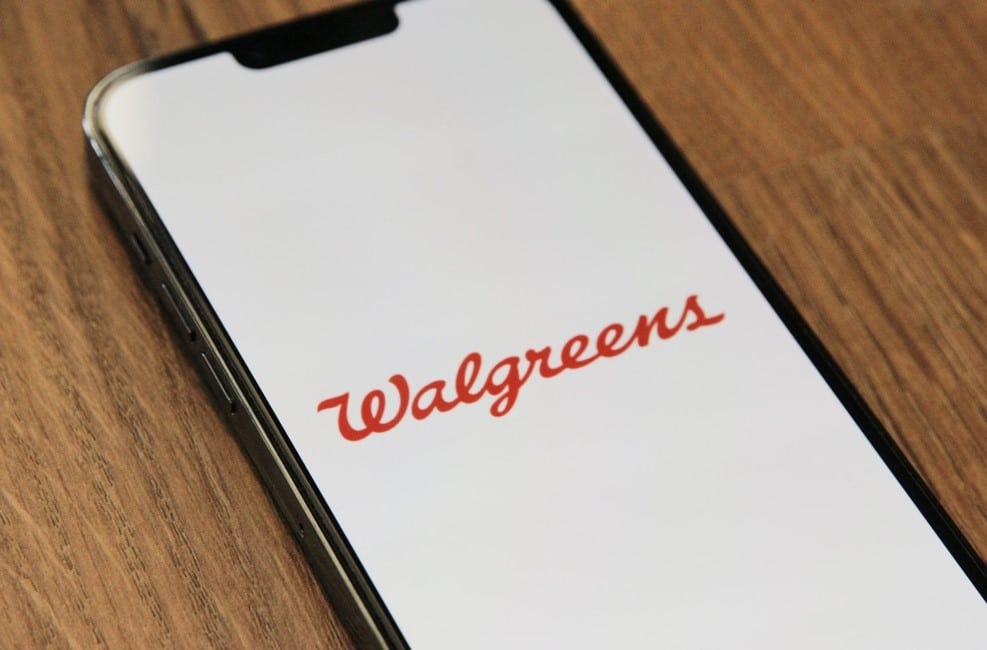Company: Best Buy Co., Inc.
CEO: Corie Sue Barry
Founder: Richard M. Schulze
Year founded: 1966
Headquarters: Richfield, Minnesota, United States
Employees (May 2020): 125,000
Ticker Symbol: BBY
Type: Public
Annual Revenue (FY2019): US$43.6 Billion
Profit | Net income (FY2019): US$1.5 Billion
Products & Services: Consumer Electronics | Best Buy Mobile | Geek Squad | Magnolia Audio Video | Napster | Pacific Kitchen & Home | Best Buy Express | Repair Services | Warranty Service | Service Plans
Competitors: Amazon | Walmart | Target | Sears | eBay | Lowe’s | Costco | Staples | Office Depot | Home Depot
Fun Fact: Did you know that Best Buy started as an audio specialty store under the name Sound of Music?
Best Buy is a Minnesota electronics retailer with over 50 years in the sector. It is not just surviving; it’s thriving and for a reason. To understand why Best Buy is thriving while others fail here is an in-depth Best Buy the SWOT analysis.
Best Buy’s Strengths
- Market Dominance: Best Buy enjoys all benefits of being the largest and dominant electronics retailer. It operates a total of 1,231 stores spread across the US, Europe, Mexico, China, Turkey, and Canada.
- Innovative Sale-Service Strategy: The challenge for most customers is the lack of info about different electronics. Best Buy is tech agnostic and resolved this issue by offering the tools to compare brands, consultations with experts, and service for all the electronics it sells.
- Strategic Acquisitions: In the past few years, Best Buy made several strategic acquisitions that enabled the retailer to exploit lucrative opportunities. Best Buy acquired Great Call in 2018 and its toolkit, Critical Signal Technologies, in 2019, which enabled it to enter into the senior health sector quicker than competitors.
- Impressive Customer Service: Love pays, it is as simple as that. Best Buy is customer-centric and ensures its customers can access products and services either through tech support by Geek squad help or directly from a store employee. Loved customers spend 1.5 times more than average. More love, more money.
- Great Omni-Channel: A perfect store that encourages customers to stay longer and act on their impulses. The longer they stay, the more they buy. Best Buy invested heavily to incorporate stores into its e-commerce strategy leading to an increase in both online and in-store sales.
- Unique BOPIS Mix: All Best Buy’s stores are used to ship online orders, with 93% of online order returns being completed at the stores. Additionally, it launched pick-up points in UPS and CVS locations for online customers. This unique mix is highly effective evidenced by the increase in Best Buy’s BOPIS (buy-online-pickup-in-store) by 40%.
- Intensive Cost Management: Since 2017, Best Buy’s earnings have increased tremendously all thanks to its effective cost management. Its interest expense decreased from $72 million in 2017 to $64 in fiscal year 2020, while other retailers struggle with rising costs.
- Strong Market Presence: Even though Best Buy only has 997 stores in the US, the company has spread the stores evenly across the market. 70% of Americans live within 10 miles of a Best Buy store, which has increased sales and contributed to its profitability.
- Extensive Portfolio: Apart from its wide range of consumer durables, Best Buy also has its own brands like Magnolia, Insignia, Modal, Pacific Sales, and many more.
Best Buy’s Weaknesses
- Restricted in the US: The retailer has a total of 1231 stores globally, with 997 stores being located in the US. This is why Best Buy is not popular or highly recognized beyond North America. Restricting its operations in and around the US exposes the brand to a myriad of issues in the market.
- Negative Publicity: In January 2020, it was revealed that Best Buy’s board was probing allegations of an inappropriate romantic relationship between CEO Corie Barry and another company executive. Allegations against the CEO paints the retailer as untrustworthy.
- Overdependence in Electronics: Technology is dynamic and ever-changing, which increases risk in the electronics business. Electronics relied upon by Best Buy to drive revenue may become obsolete within a few months to years. What next?
Best Buy’s Opportunities
- Focus on Senior Health: According to a report by Morgan Stanley, Best Buy can earn more from healthcare than electronics. Catering to the health of seniors is a gold mine. With the acquisition of Great Call, Best Buy is perfectly positioned to profit from catering to seniors’ health.
- Increase Online Sales: Even though Best Buy has adopted eCommerce very effectively, it still has room for growth. It should seek to attain the same level of eCommerce adoption as Amazon. As of February 2020, its online sales accounted for 25% of total sales and still has a long way to go.
- Expand in Emerging Markets: With most of its stores located in the US, Best Buy should be looking to expand more across the world. Unlike the saturated and competitive UK market, Best Buy can succeed in unsaturated markets in emerging economies.
- Strengthen Market Presence: Would you travel 10 miles to shop at Best Buy when you can get the product at a Walmart across the street? Probably not. Best Buy should open more stores to fill in the gaps and reduce the distance.
- Grow through Acquisition: The retailer already benefited from strategic acquisitions. However, that does not mean it cannot benefit and grow through acquisition again and again. For one, the decline of Sears makes it weak enough for the picking.
Best Buy’s Threats
- Intense Competition: In the online sector, Best Buy competes against Amazon. Subsequently, it is fending off strong and relentless brick-and-mortar competitors like Walmart. Whether it is online or offline, competitors are all salivating while planning on how to grab Best Buy’s market share.
- Looming Recession: It would be unwise for any business to think they are immune to an economic recession. With the looming pandemic recession, Best Buy’s meteoric rise may soon come to a sudden halt.
- The inevitability of Strikes: While the newly enacted USMCA was meant to advance America’s First agenda, it has empowered employees across the border. Home Depot’s employees in Mexico, where Best Buy also operates, are already planning to strike for higher pay. Strikes are infectious so; Best Buy’s strike may not be far away.
- Increase in Counterfeits: Best Buy relies heavily on electronics, but they are targeted by imitators and counterfeiters. The counterfeits of the digital age are of high quality but very cheap. This is a bargain is irresistible even for loyal Best Buy customer.
- Retail Apocalypse: From Pier 1 Imports to Sears, Kmart, Forever 21, and Walgreens, all these retailers were previously mighty but are now planning to close stores before the end of 2020. Best Buy is not immune to the retail apocalypse.
References
- Fortune (2019). 500 Global: Best Buy. Fortune
- Repko, M. (2020, May 21). Why Best Buy’s CEO thinks the appointment-only shopping strategy was the best approach. CNBC
- Muoio, D. (2019, June 03). Best Buy acquires another remote senior monitoring service. Mobile Health News
- Howland, D. (2020, April 29). Best Buy resumes ‘Geek Squad’ and delivery services. Retail Dive
- Verdon, J. (2019, Sep. 26). Six Reasons Why Best Buy Will Continue To Dominate. Forbes
- Forde, M. (2019, Nov. 27). Best Buy launches e-commerce pickup in 175 New York UPS, CVS locations. Supply Chain Dive
- Great Speculations (2020, June 1). Why Is Best Buy’s Stock Up Over 90% Since 2017, Despite Only A Small Revenue Jump? Forbes
- Mourdoukoutas, P. (2019, March 2). Best Buy Is Still In Business — And Thriving. Forbes
- Forbes Profiles (2020). Company: Best Buy. Forbes
- Statista Research (2020, June 19). Total number of Best Buy stores worldwide 2010-2020. Statista
- Thomas, L. (2020, Jan. 17). Best Buy board investigating CEO Corie Barry for alleged misconduct. CNBC
- Kumar, K. (2020, Feb. 22). Best Buy well-positioned to benefit from growth in electronics sales. Star Tribune
- Cheng, A. (2019, Sep. 24). Healthcare May Eventually Become A Bigger Business For Best Buy Than Selling Electronics. Forbes
- Davis, D. (2020, Feb. 27). Online accounts for more than 25% of Best Buy sales in Q4. Digital Commerce 360
- Shedd, K. (2019, Aug. 6). Why Best Buy thrives in the US but died in the UK. CNBC
- Howland D. (2018, April 10). Best Buy to open the first store in 7 years. Retail Dive
- Sheetz, M. (2018, Oct. 16). Best Buy, now the ‘last man standing,’ will benefit from Sears bankruptcy, analyst says. CNBC
- Cheng, A. (2018, Aug. 28). Why Best Buy Remains Relevant In The Age of Amazon. Forbes
- Schwartz, N. D. (2020, March 21). Coronavirus Recession Looms, Its course Unrecognizable. The New York Times
- Milenio, S. P. (2020, January 16). Home Depot workers seek a 20% pay hike, threaten to strike in 13 states. Mexico News Daily
- Partington, R. (2019, March 8). Online retail fuelling rapid rise in sales of fake goods, says OECD. The Guardian
- Peterson, H. (2020, Jan. 8). More than 1,700 stores are closing in 2020 as the retail apocalypse drags on. Business Insider
- Featured Image by Morning Brew on Unsplash
Tell us what you think? Did you find this article interesting?
Share your thoughts and experiences in the comments section below.












Add comment